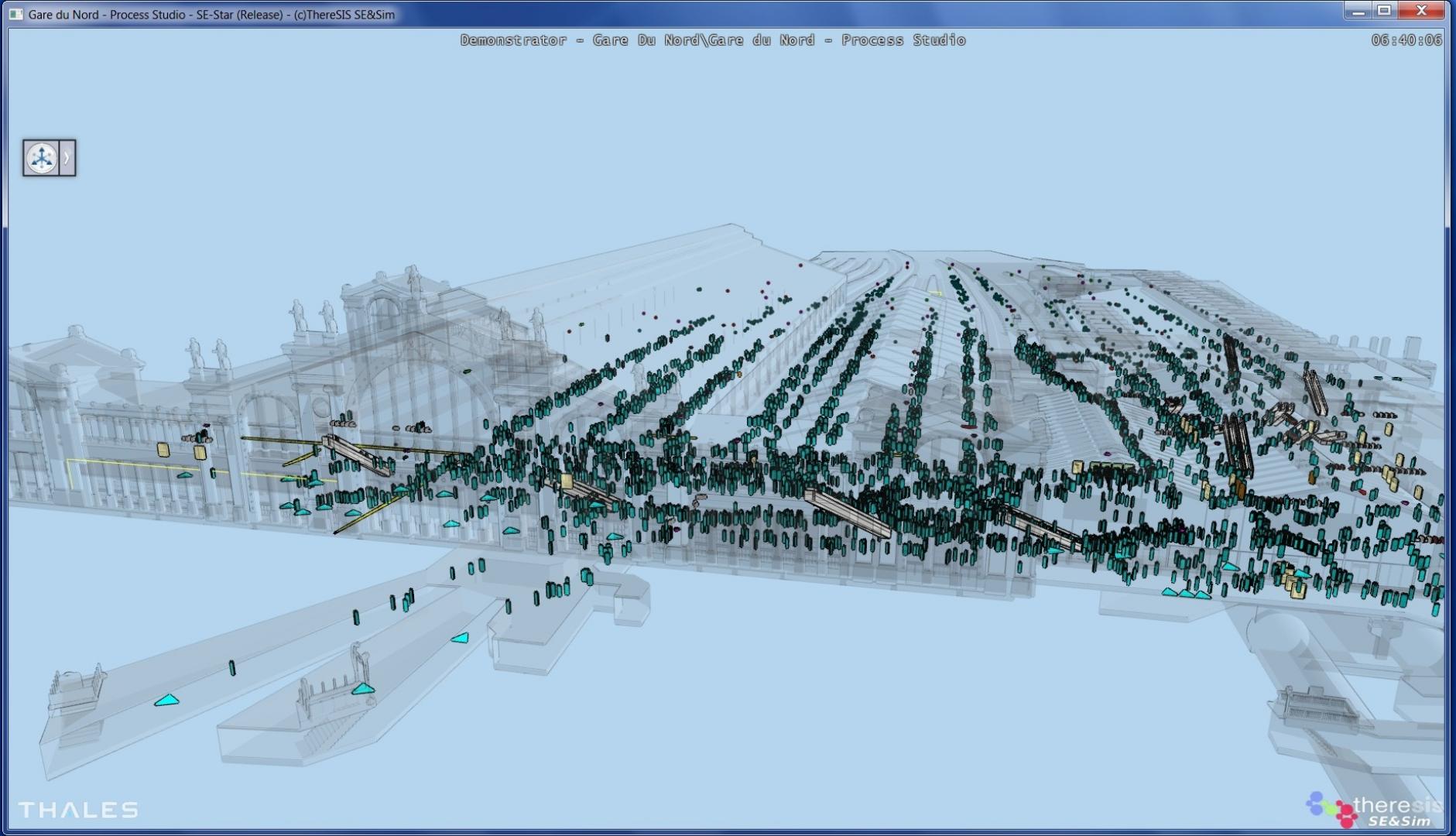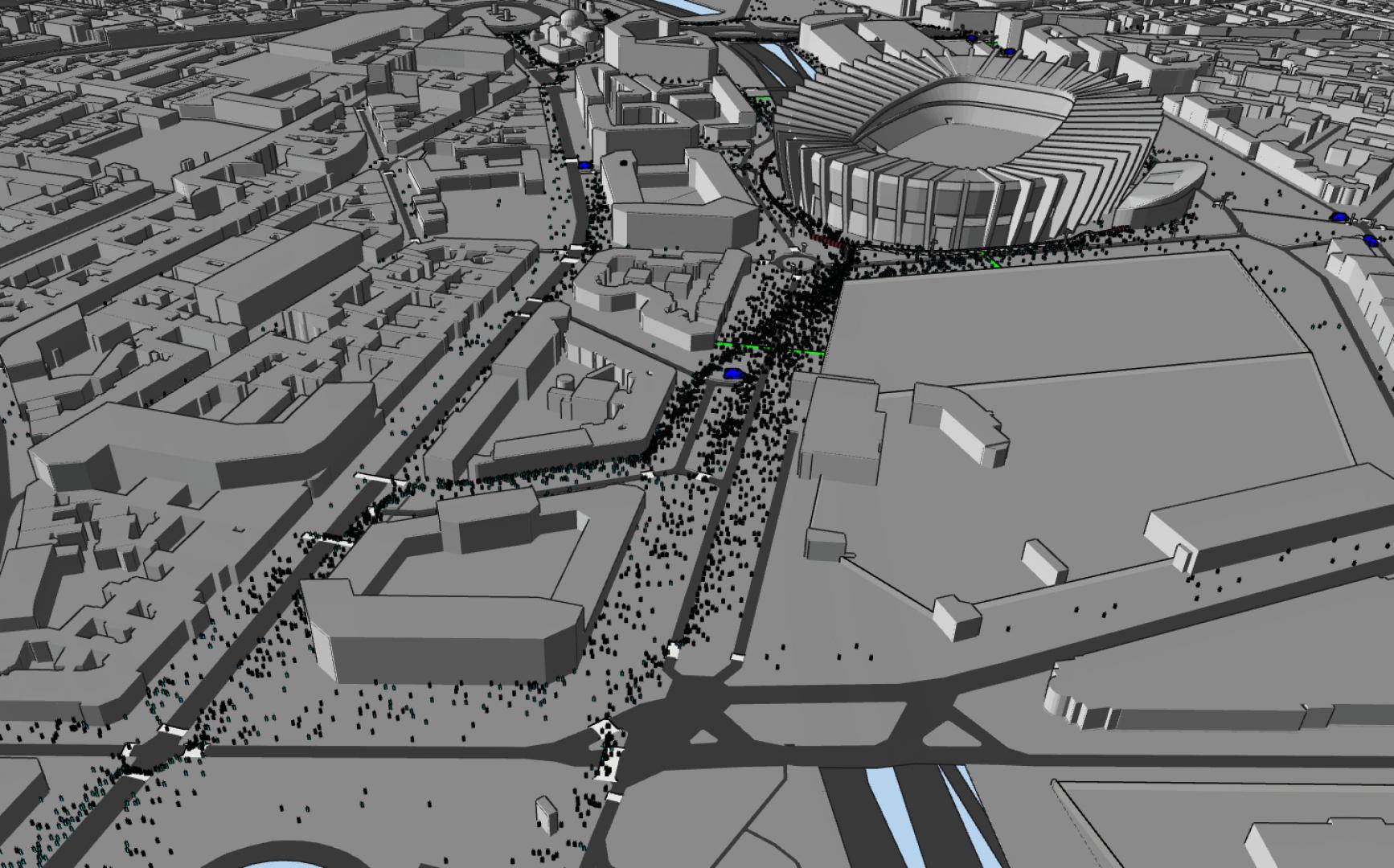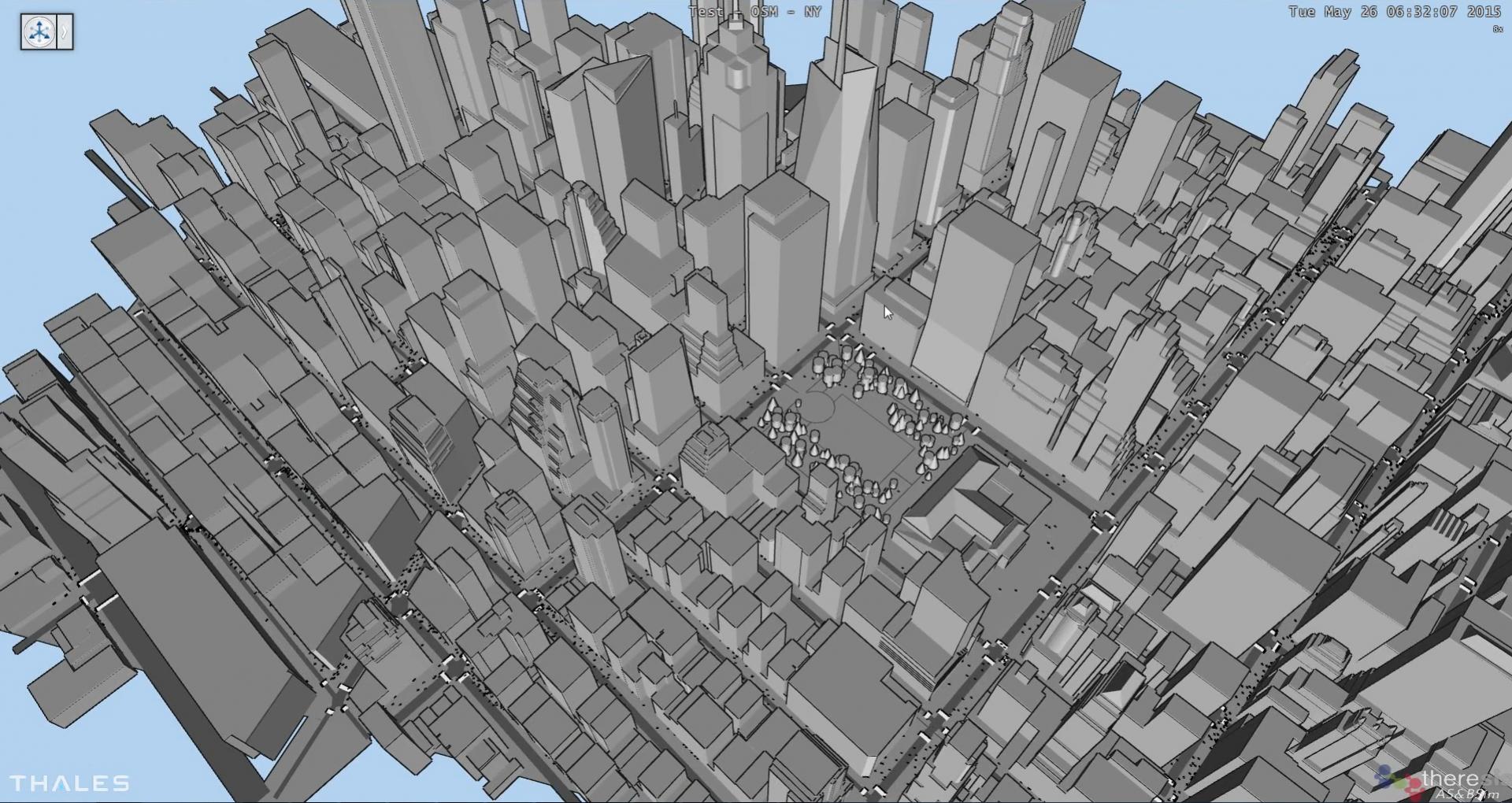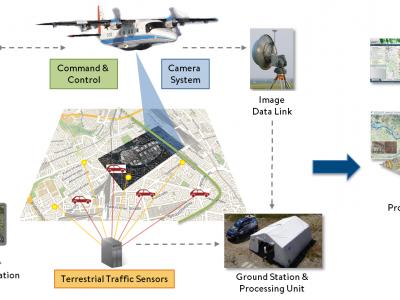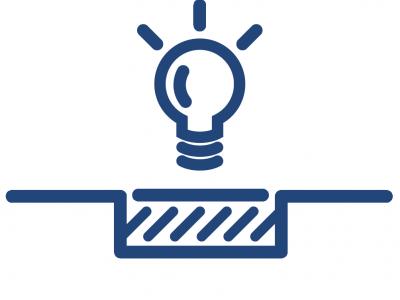Contact
Provider(s):
SE-Star uses a Biomimetic control architecture based on navigation (Hippocampus), action selection (Basal ganglia) and planning (Frontal cortex). Use-cases are: design of critical infrastructures and business processes, supervision (video & crowd) operators’
, data generation for deep neural networks
(video & dataset generation), decision support, what-if
exploration and collaborative systems testbed.
SE-Star can provide information from high level (density, alarms and situation reports) to low level (individual’s information, devices’ status). It can simulate between 5000 and 10000 peoples on one computer in real time and can work in distributed mode pushing limits (tested with 80000 peoples on 10 IntelTM NUC computers). SE-Star has been used in the EU projects (Opti-Alert, SECURE-Ed, iCore) and in THALES projects covering airports (Pisa), train stations (Gare du Nord) or crowded places (Mecca). Easily extendable, it has been connected to real systems (crowd monitoring, airport supervision) using standard interfaces and protocols (SOAP, REST, RTSP).
Supported Use Cases
Typical SE-Star Use Cases
 |
Portfolio of Solutions web site has been initially developed in the scope of DRIVER+ project. Today, the service is managed by AIT Austrian Institute of Technology GmbH., for the benefit of the European Management. PoS is endorsed and supported by the Disaster Competence Network Austria (DCNA) as well as by the STAMINA and TeamAware H2020 projects. |
